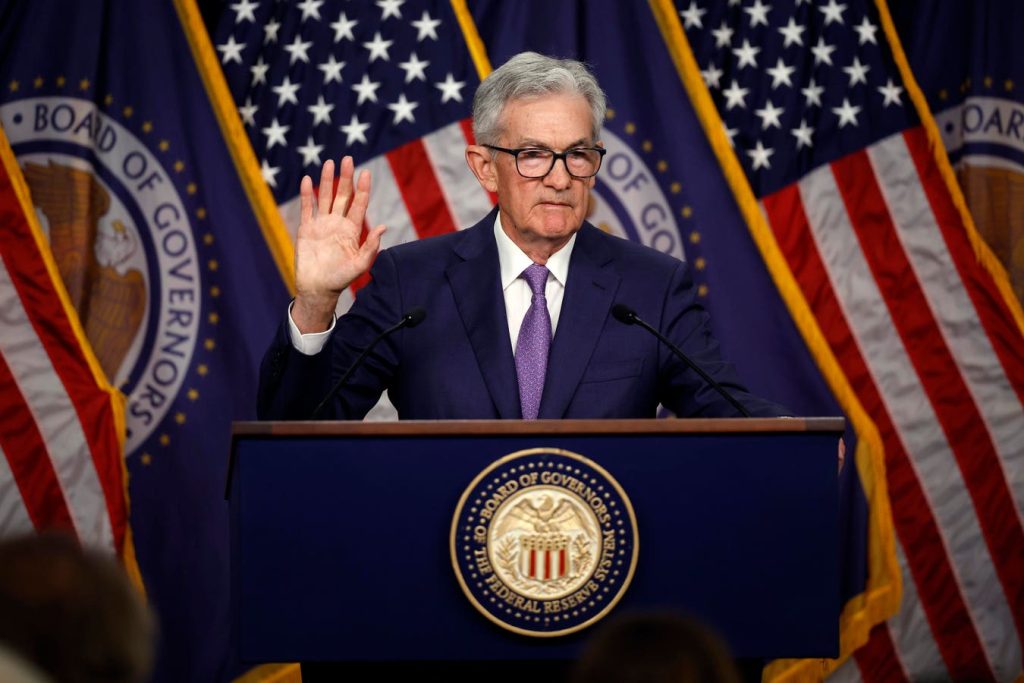The U.S. Federal Reserve’s upcoming policy decision on December 18th holds significant weight for financial markets, particularly given the approaching holiday season and the consequent reduction in trading volume. While a 0.25% interest rate cut is widely anticipated, the true market-moving potential lies in the accompanying Federal Open Market Committee (FOMC) projections, which offer insights into the Fed’s outlook on future interest rates, economic growth, inflation, and unemployment. These projections, including the “dot plot” visualizing individual FOMC member forecasts, are closely scrutinized by investors and analysts alike for clues about the direction of monetary policy.
The current market consensus, supported by tools like the CME FedWatch Tool, overwhelmingly favors a 0.25% rate cut. This expectation aligns with previous Fed projections and expert forecasts. However, the market’s focus remains firmly fixed on the updated FOMC projections. These projections, released alongside the policy statement and followed by a press conference from Fed Chair Jerome Powell, will offer crucial details about the Fed’s anticipated trajectory for interest rates and economic conditions. The projections encompass forecasts for real GDP growth, PCE inflation, and the unemployment rate, with a particular emphasis on the interest rate outlook.
The September FOMC projections provided a glimpse into the committee’s medium-term expectations, indicating a federal funds rate of 3.4% by the end of 2025 and 2.9% by the end of 2026. These projections also suggested a relatively optimistic outlook for real GDP growth and a gradual easing of inflation, although remaining above the Fed’s 2% target in the near future. The December projections will be compared against this backdrop, with any significant deviations potentially triggering market reactions.
The potential market impacts of the FOMC projections are substantial. Three primary scenarios are being considered: projections reflecting more rate cuts, relatively unchanged projections, or projections signaling fewer and/or slower rate cuts. While the first scenario seems less probable given current economic conditions, the latter two hold significant sway over market expectations. If the projections remain largely unchanged, it could provide support for equities, bond prices, oil prices, and industrial metals, while potentially leading to a decline in the dollar and bond yields.
Conversely, if the FOMC projections indicate fewer or slower rate cuts than previously anticipated, it could trigger a rise in bond yields and the dollar, while exerting downward pressure on equities, bond prices, crude oil, and industrial metals. This potential market reaction stems from the implication of a less accommodative monetary policy and a stronger dollar, impacting asset valuations and investor sentiment. The uncertainty surrounding these projections adds to their market-moving potential, making them a focal point for investors this week.
The analysis of the December FOMC projections will not be limited to the numerical forecasts. Market participants will also closely scrutinize Fed Chair Powell’s press conference for nuances and further context regarding the committee’s views on the economy and the rationale behind their projections. This qualitative assessment of the Fed’s communication will be crucial in interpreting the projections and gauging the future direction of monetary policy. Ultimately, the market’s reaction will be determined by the degree to which the December projections deviate from previous forecasts and the perceived implications for future economic growth and inflation. The interplay between these factors will shape investor sentiment and drive market movements in the coming days and weeks. Furthermore, subscribing to relevant financial and economic resources, such as YouTube channels and specialized websites, can offer additional insights into these complex market dynamics and their potential impacts.

